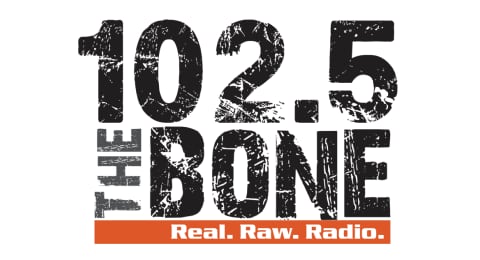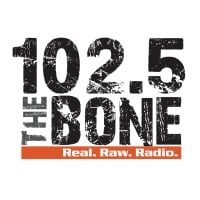Closing arguments in Donald Trump's historic criminal hush money trial began on Tuesday, with the defense going first, followed by the prosecution. Judge Juan Merchan will then give the jury instructions before they begin deliberations, and they could reach a verdict this week.
Prosecutors have charged former President Trump with 34 counts of falsifying business records while trying to cover up an effort to illegally influence the 2016 election with an alleged scheme to bury claims of extramarital affairs that could have harmed his presidential campaign. Trump has pleaded not guilty to the charges and faces a maximum of four years in prison for each count if convicted.
Hush money payments are not illegal, so prosecutors have to prove beyond a reasonable doubt that Trump is guilty of maintaining or causing the falsification of business records, with the intent to cover up another crime, like violating tax and campaign finance laws. All 12 jurors have to find Trump guilty in order for him to be convicted.
In total, there were 20 days of testimony, 20 witnesses were called by the prosecution, while two were called by the defense, and over 200 pieces of evidence were presented. Trump did not testify in his defense.
Below are some of the bigger pieces of evidence laid out in the prosecution’s case that lead up to or are directly linked to documents allegedly falsified to disguise a $130,000 payment to porn star Stormy Daniels in an effort to hide negative information from voters ahead of the 2016 election.
💡 August 2015: The alleged scheme is hatched
Trump officially announced his presidential run in June 2015. Two months later, Trump and Michael Cohen, Trump’s former lawyer, met at Trump Tower with David Pecker, then CEO of National Enquirer publisher American Media Inc (AMI). It was at this August 2015 meeting when Trump, Cohen and Pecker struck an agreement and “conspired to influence the 2016 presidential election,” prosecutors alleged during opening arguments, per court documents.
Pecker and Cohen testified that the meeting was when Pecker said he would act as the “eyes and ears” of Trump’s campaign to quash any negative stories about the then-presidential candidate. Pecker also said he would notify Cohen if anything surfaced. Pecker said prior to the meeting, he never previously bought stories to specifically kill them for Trump.
But that’s exactly what Pecker did twice for the 2016 Trump campaign following the August 2015 meeting, according to prosecutors. AMI paid $30,000 for the rights to a story, which turned out to be false, from a former Trump Tower doorman regarding information that Trump allegedly had a child out of wedlock.
Three months before the 2016 election, AMI also paid $150,000 for the rights to Playboy model Karen McDougal’s story, in which she alleges that she had a months-long affair with Trump, which Trump denies. Pecker agreed to the McDougal deal with the understanding that Trump would pay him back.
“[Pecker] wanted the $150,000 back because it was too much money for him to hide from the CEO of the parent company,” Cohen testified. “And he had also just laid out $30,000 previously. So he was putting pressure on me to speak to Mr. Trump to get the money back,” Cohen told jurors.
📼 Sept. 6, 2016: Cohen secretly records a conversation with Trump about the McDougal payment
Weeks after AMI fronted the $150,000 for the rights to McDougal’s story, Pecker expressed his frustration to Cohen that he hadn’t been paid back yet. Cohen testified that he used his phone to secretly record a conversation he had with Trump on Sept. 6, 2016, at Trump Tower to later play for Pecker to show that Trump had intentions of paying him back and “wanted him to remain loyal.”
On the recording, Cohen is heard telling Trump about a shell company he created to facilitate the McDougal payment, with the purpose of removing Trump’s association with the deal. Cohen also says on the recording he had spoken to Allen Weisselberg, the Trump Organization’s chief financial officer, about how to “set the whole thing up with funding.”
“So, what do we got to pay for this? 150?" Trump can be heard asking Cohen in the recording, which the prosecution says refers to the $150,000 payment AMI made to McDougal.
The prosecution wants to show the jury that Trump knew about the plan and the McDougal hush money payment in an effort to suppress the negative story about him weeks before the 2016 election.
📹 The October 2016 surprise and fallout
On Oct. 7, 2016, the Washington Post published the infamous "Access Hollywood" tape. It was a video from 2005 that revealed Trump talking on a hot mic, bragging about his ability to sexually assault women. With a month to go before the 2016 election, Trump's campaign went into panic mode after the tape was released, prosecutors allege. In a statement, Trump chalked the tape up to "locker room banter." Judge Juan Merchan ruled that the tape would not be played for jurors during the trial, but allowed prosecutors to enter into evidence of what Trump said on the recording.
“The defendant and his campaign staff were deeply concerned that the tape would irreparably damage his viability as a candidate and reduce his standing with female voters in particular,” the prosecution said during opening arguments, according to court documents.
Former Trump aide Hope Hicks was one of the witnesses called by the prosecution who testified that the tape was “a damaging development,” that “was just pulling us backwards in a way that was going to be hard to overcome.”
👩 Cue Stormy Daniels
The very next day, Daniels’s representative told the National Enquirer that she was willing to make on-the-record statements confirming a sexual encounter with Trump, which Trump has since denied. Cohen got word of this and told Trump, who was adamant about not letting the story get out.
Cohen testified, “[Trump] was polling very poorly with women, and this, coupled with the previous Access Hollywood tape, he just stated, ‘This is a disaster, and get control over it.’”
Prosecutors showed a clip of Trump at a campaign rally on Oct. 14, 2016, days after the "Access Hollywood" tape was published — and at a time when a few women were coming forward with allegations that Trump sexually assaulted them. Trump has denied the allegations.
“These are all horrible lies, all fabrications,” Trump told supporters at the rally. “And we can’t let them change the most important election in our lifetime. If 5% of the people think it’s true, and maybe 10%…we don’t win.”
Prosecutors argue that his remarks show his urgent motivation to bury Daniels’s story before the election.
🤫 October 2016: The Stormy Daniels hush money deal
Cohen negotiated a $130,000 deal with Daniels's lawyer, Keith Davidson, to buy the rights to her alleged story to keep her quiet — the hush money payment at the center of the trial.
Cohen testified that during the negotiation process, Trump told him to delay the payment. “What he had said to me is: What I want you to do is just push it out as long as you can. Just get past the election, because if I win, it has no relevance, I will be president. If I lose, I don't even care.”
Davidson testified he was growing impatient with Cohen, who seemed to be stalling on the deal, and threatened to back out. Trump ultimately agreed to the payout, but allegedly didn’t want to make the payment himself, so he asked Cohen and Weisselberg to find a way to make the payment.
Would Pecker front the money for a third “catch and kill” payment for Trump? Not a chance, Pecker testified. “We already paid $30,000 to the doorman, we paid $150,000 to Karen McDougal, and I am not a bank. I am not paying out any further disbursements among us,” Pecker said.
Cohen ended up fronting the $130,000 from his own pockets, taking out a home equity line of credit without telling his wife.
📲 Oct. 26, 2016: Cohen’s phone calls to Trump
On Oct. 26, 2016, Cohen set up a bank account in the name of a shell company he created, Essential Consultants LLC, in order to distance Trump from any hush money payments. Before Cohen set up the bank account, he called Trump twice that morning, according to call logs submitted as evidence by prosecutors.
Cohen testified, “I wanted to ensure that, once again, he approved what I was doing because I required approval from him on all of this. That's what the sum and substance of the conversation was, laying out exactly what was going to happen, what was being done in order to ensure the story didn't get sold to Daily Mail or somebody else.”
Prosecutors want to show the jury that Trump knew about the hush money being transferred to Daniels’s lawyer.
🤝 Late October 2016: A done deal
On Oct. 27, 2016, Cohen wired a $130,000 payment to Daniels's lawyer using his shell corporation.
Once the wire transfer was received, Daniels signed the confidential settlement agreement between David Dennison and Peggy Peterson, pseudonyms that Davidson testified he created for Trump and Daniels. The statement and the pseudonyms speak to the prosecution’s claim that Trump sought to keep the payment to Daniels a secret.
📃 Follow the paper trail
After Trump was elected president in 2016, Cohen wanted to get reimbursed for fronting the $130,000 hush money to Daniels.
Cohen testified that days before Trump’s 2017 inauguration, he met with Trump and Weisselberg at Trump Tower to lay out a repayment plan, ultimately deciding that he would be repaid a total of $420,000, including the $130,000 hush money reimbursement and a bonus, with the total grossed up to include taxes, since Cohen would be claiming the money as income, and not a reimbursement. They agreed that the payments would be split into 12 monthly payments of $35,000. Weisselberg's handwritten calculations are on the lower left of Cohen's bank statement below.
“[Trump] approved it, and he also said, 'This is going to be one heck of a ride in D.C.,’” Cohen testified of the January 2017 meeting.
Former Trump Organization controller Jeffrey McConney, the prosecution’s witness, testified that he had Cohen submit invoices to the Trump Organization in order to get paid. Cohen indicated that the $35,000 invoices were pursuant to a legal retainer agreement.
But Cohen testified there was never any legal retainer agreement. Here’s where the falsification of 34 documents comes into play.
Eleven of the felony counts relate to the 11 invoices Cohen sent to be reimbursed by the Trump Organization. Then there were 12 counts related to falsified ledger entries that classified the payments as legal services. Then there are 11 checks, nine of which were allegedly signed by Trump himself, and were scanned and maintained in the Trump Organization’s data system before being mailed out.
Two of the prosecution’s witnesses — Deborah Tarasoff, a former accountant at the Trump Organization, and Madeleine Westerhout, a former White House aide — both testified that Trump would sign his own checks.


